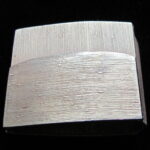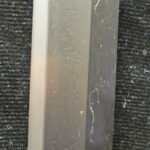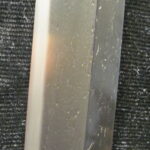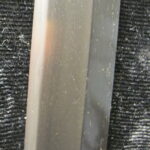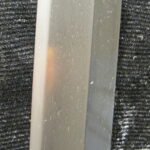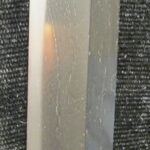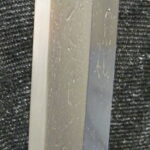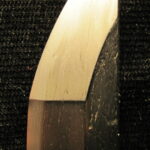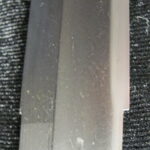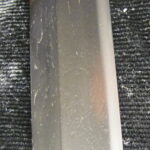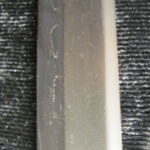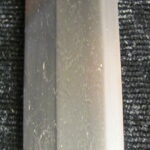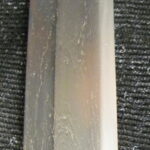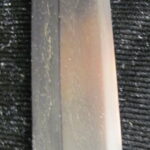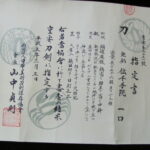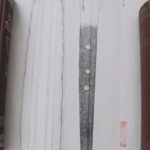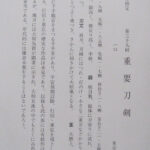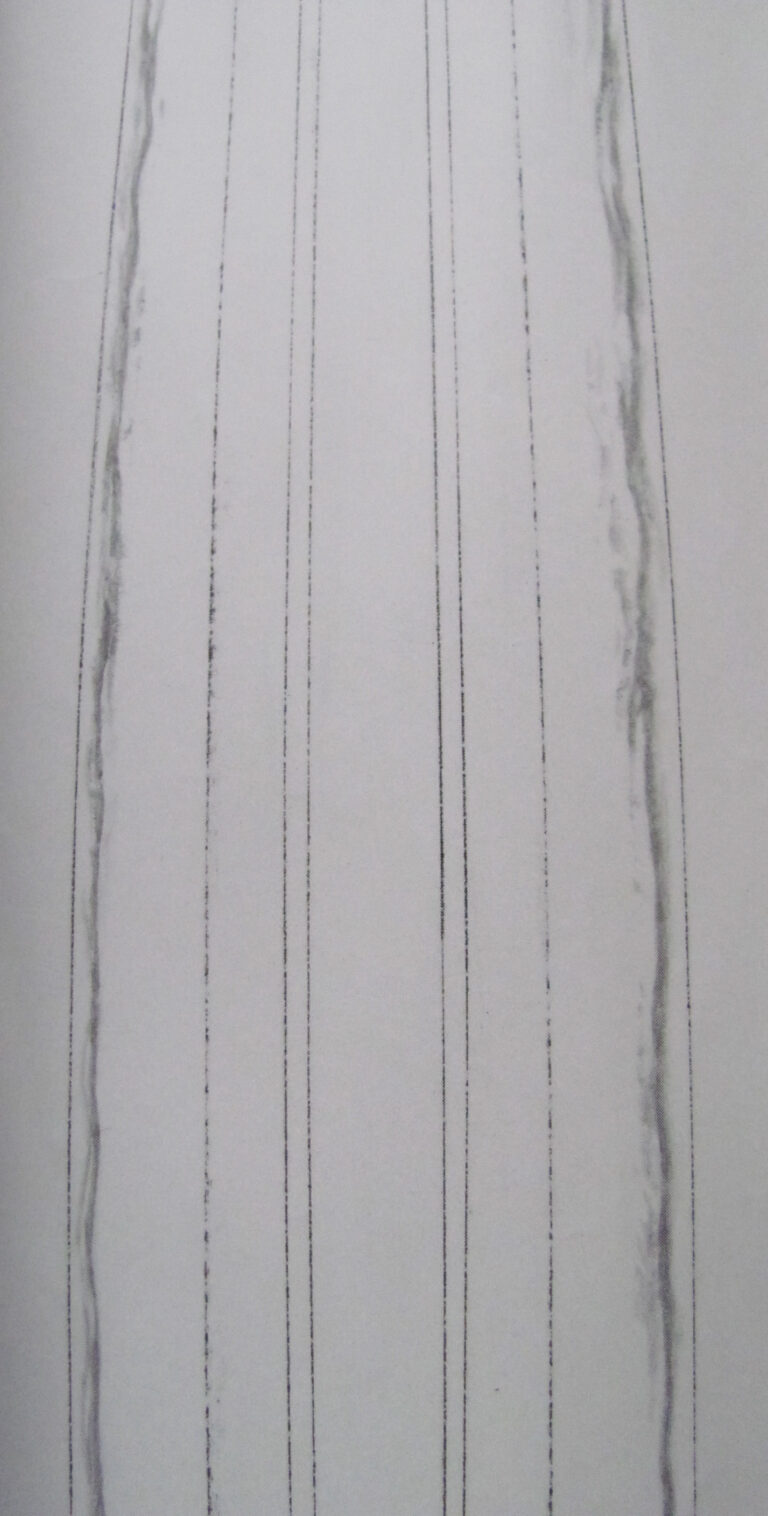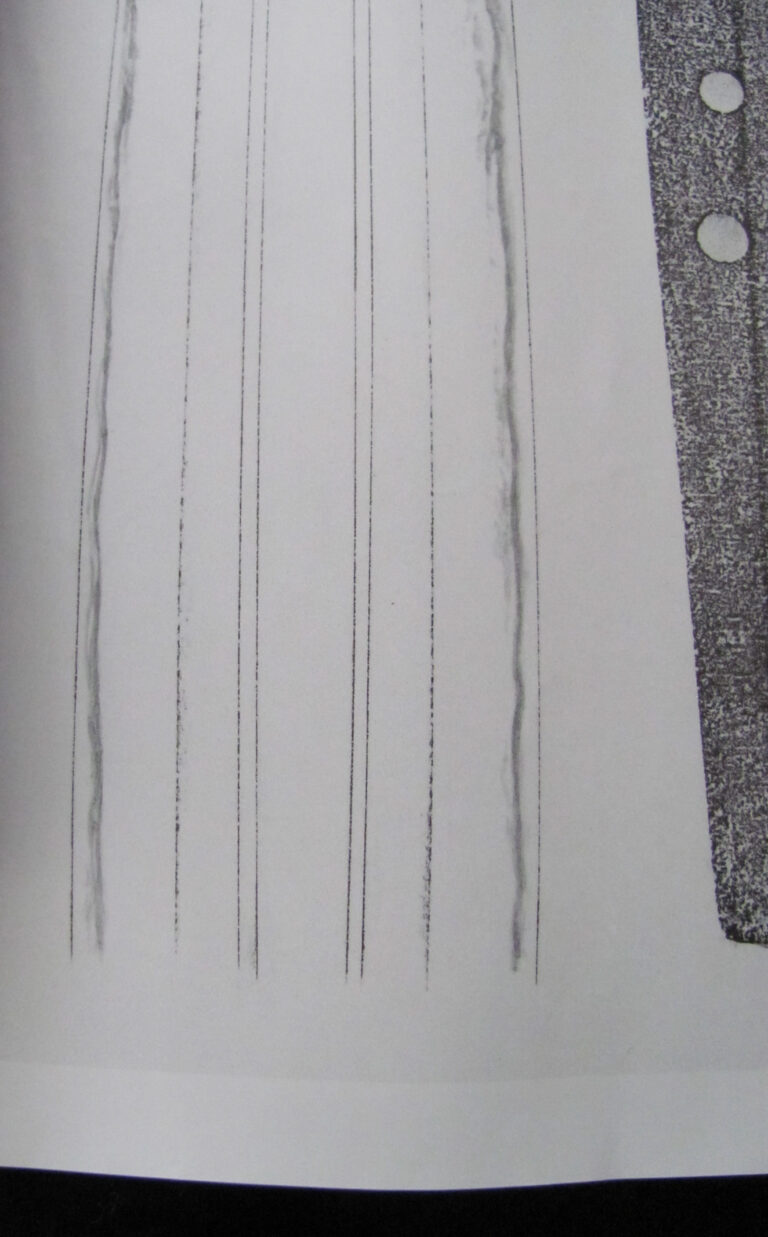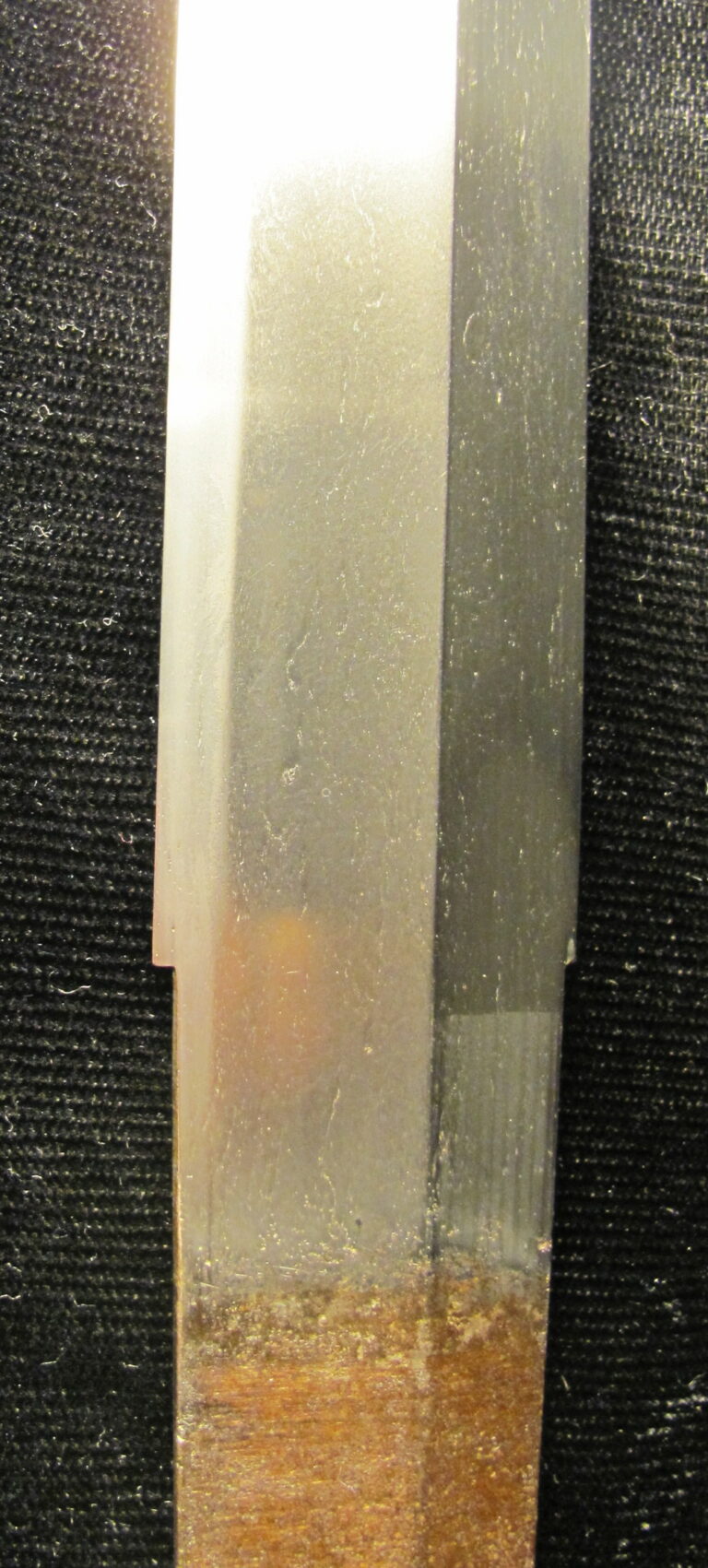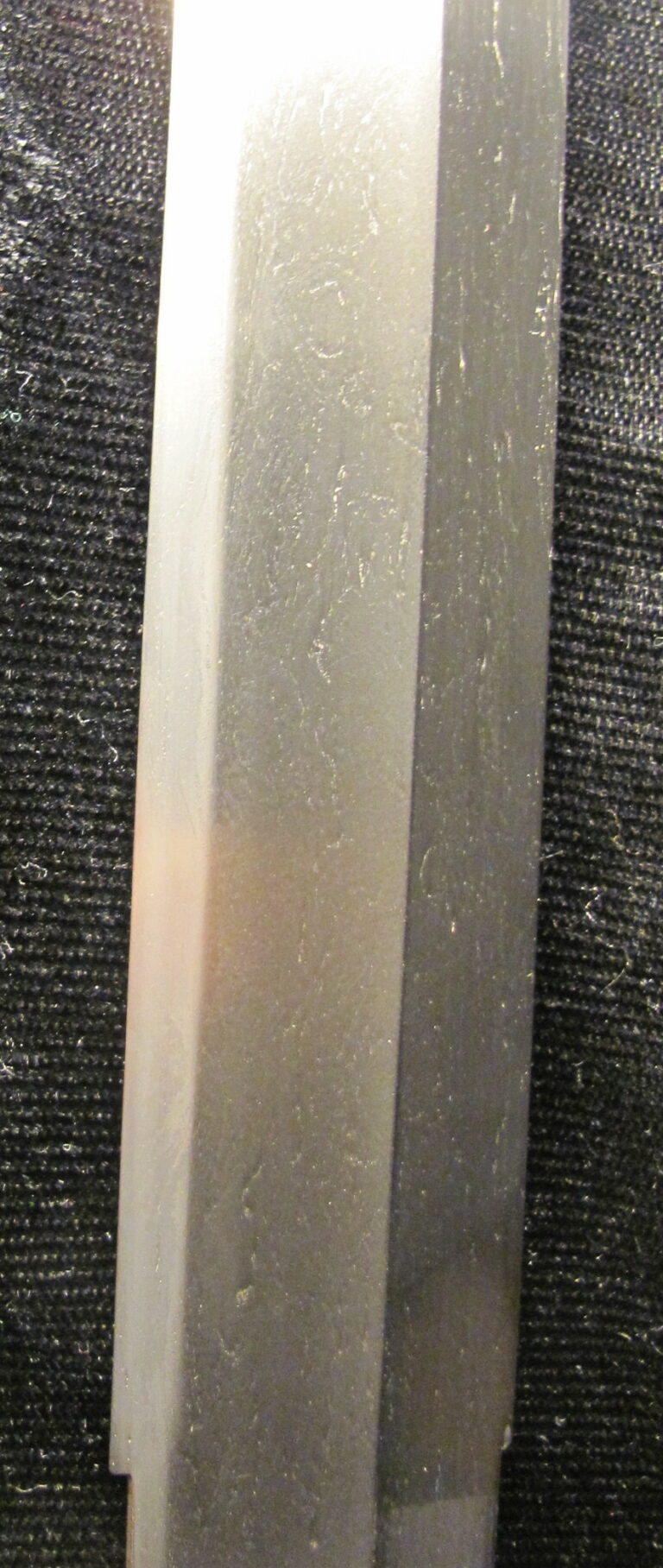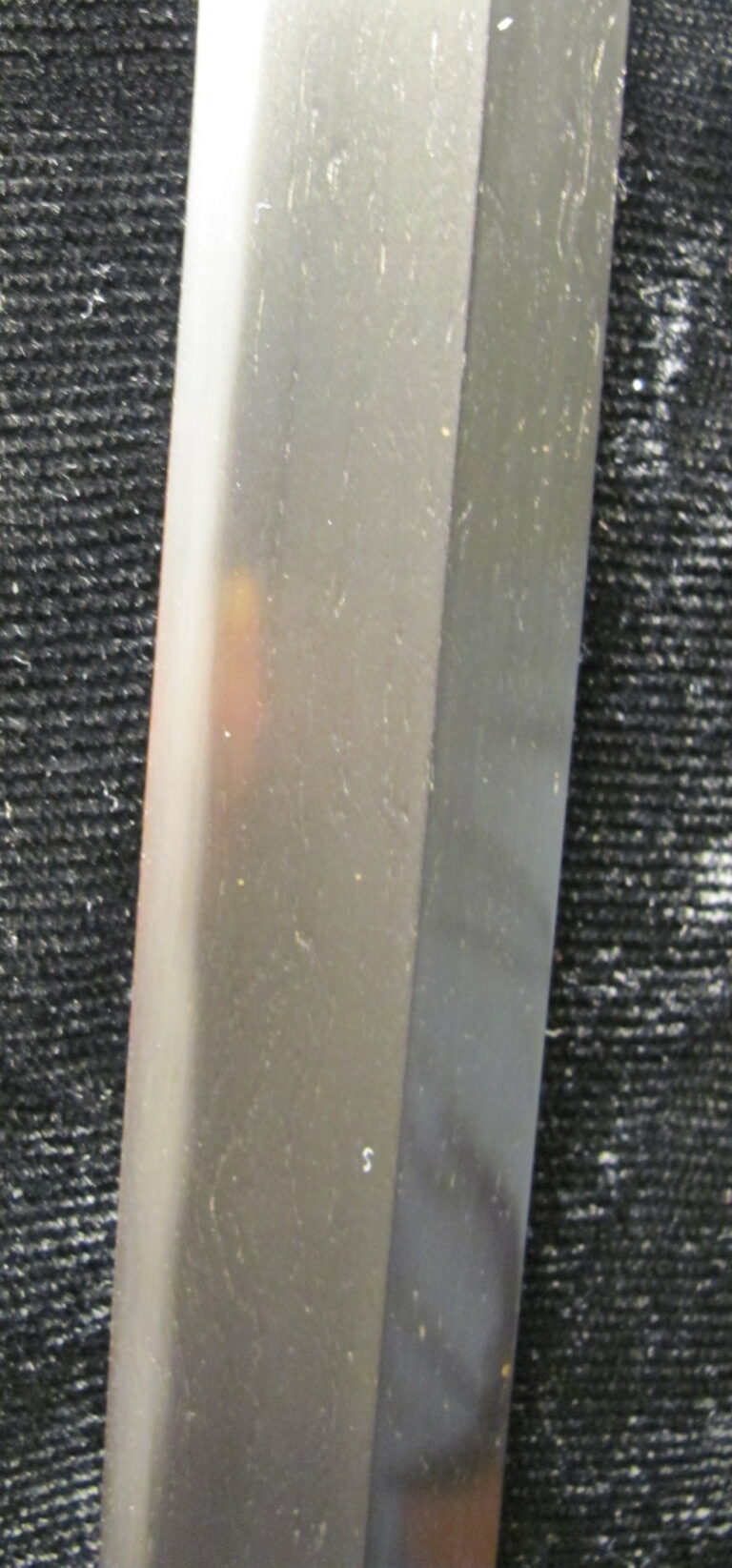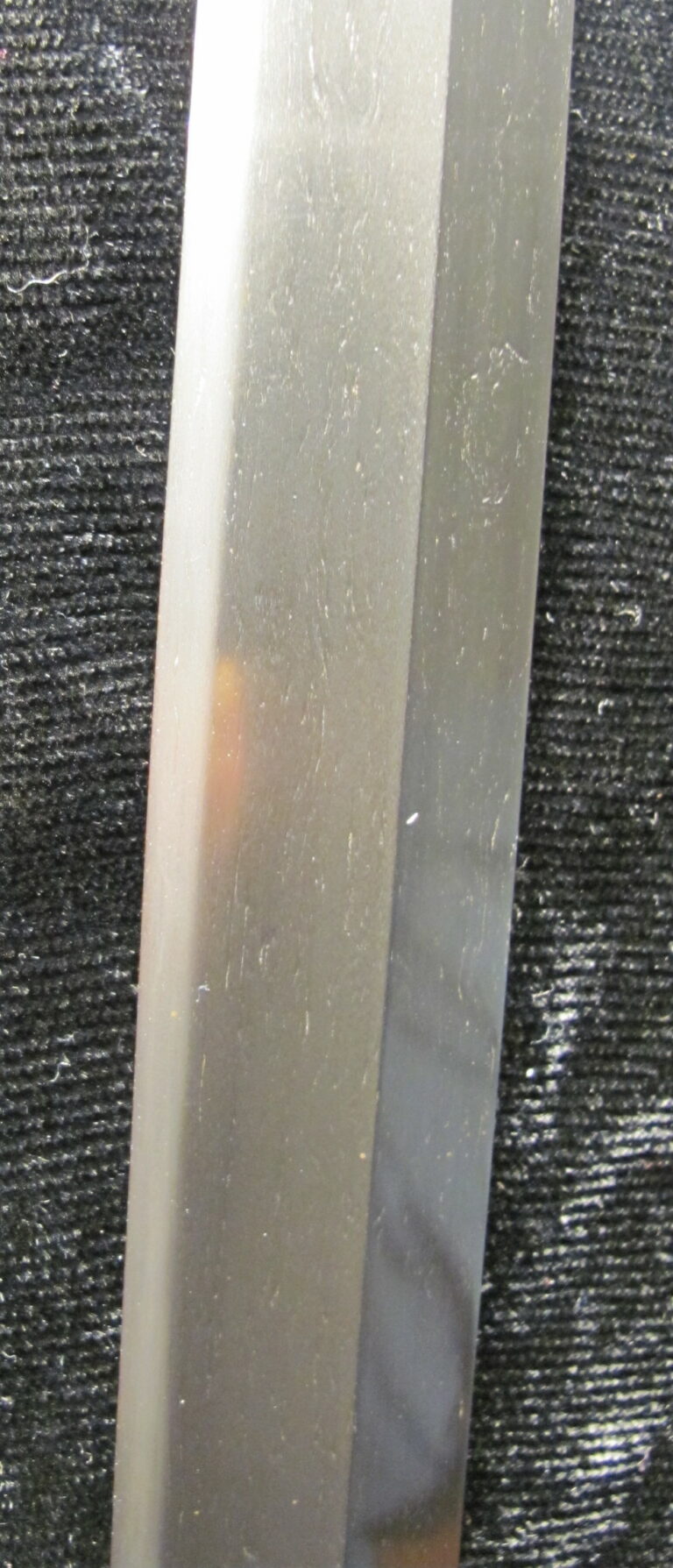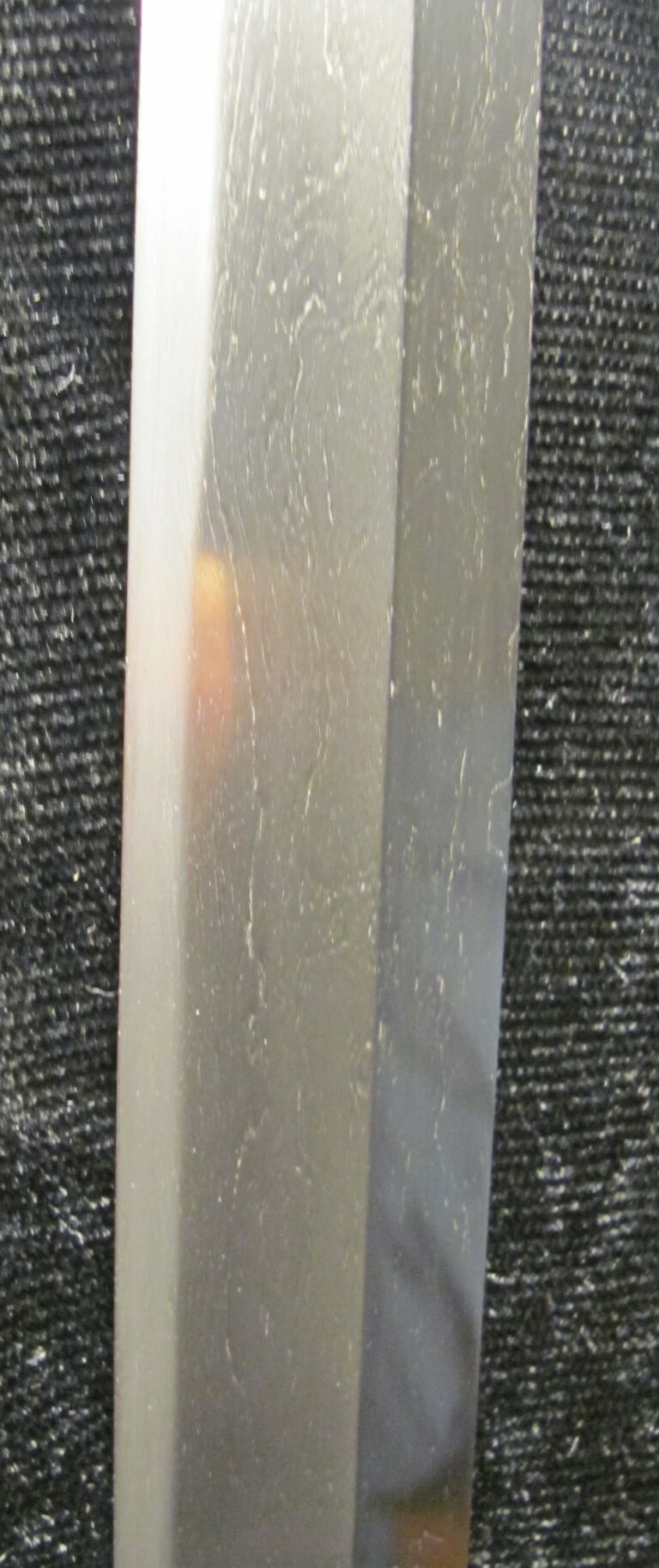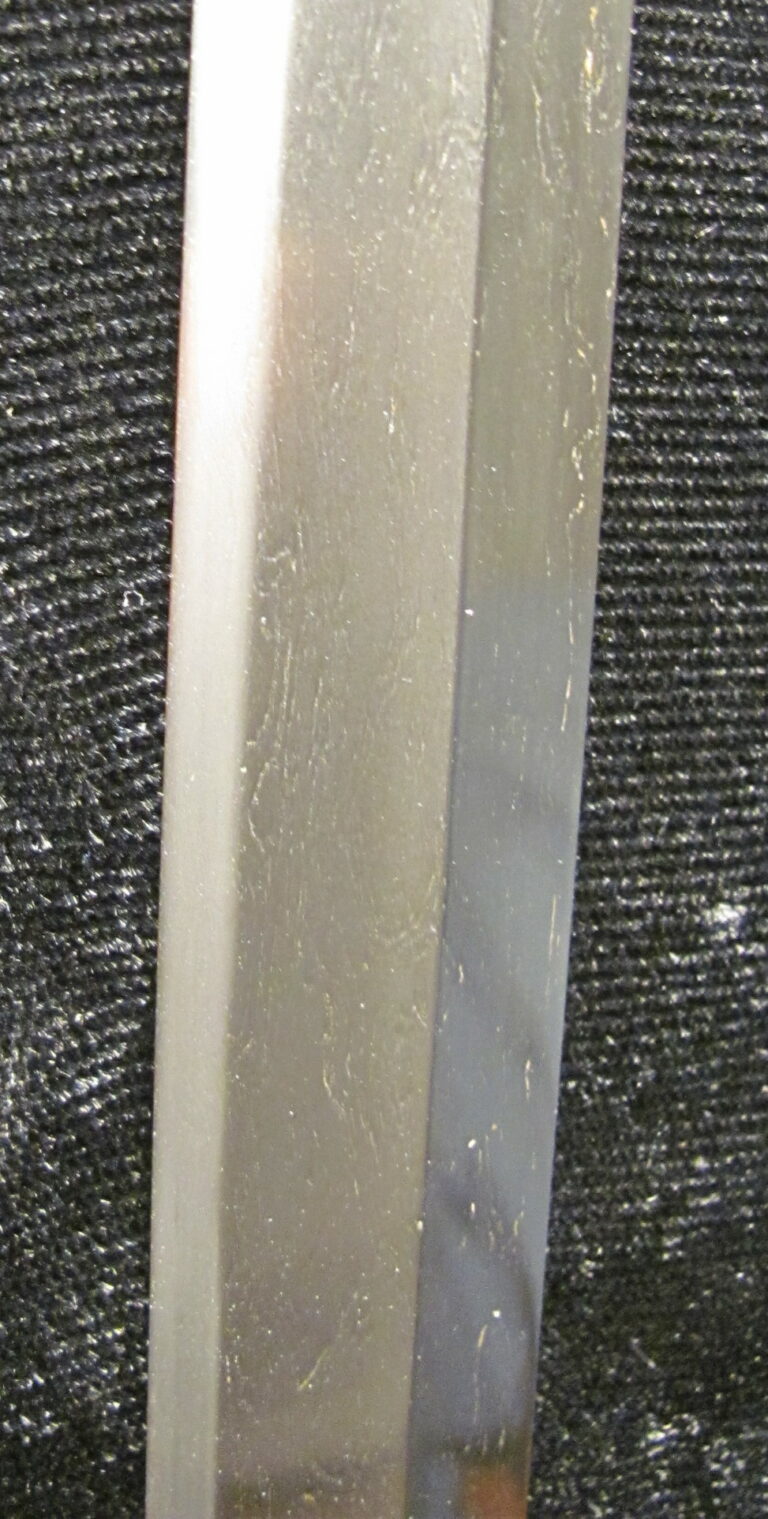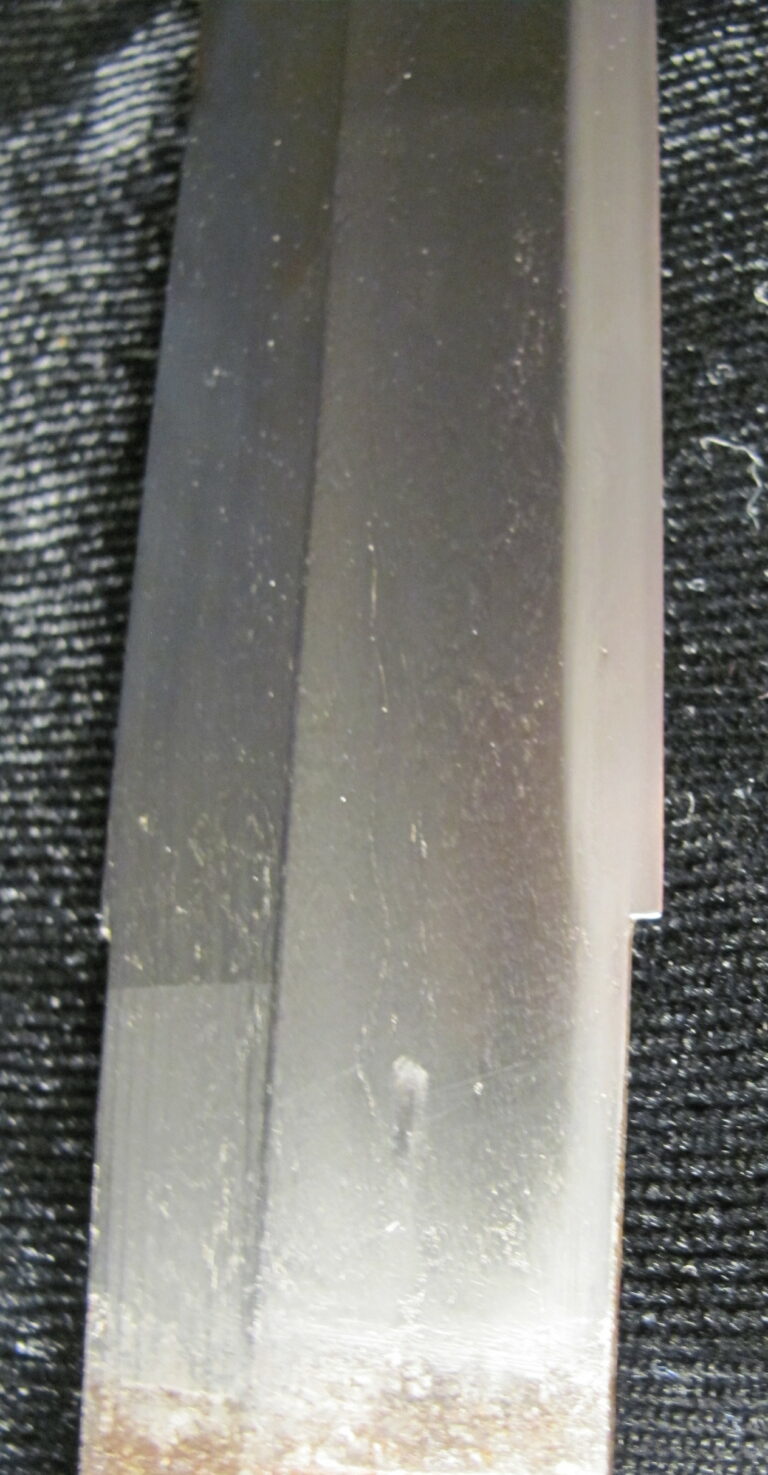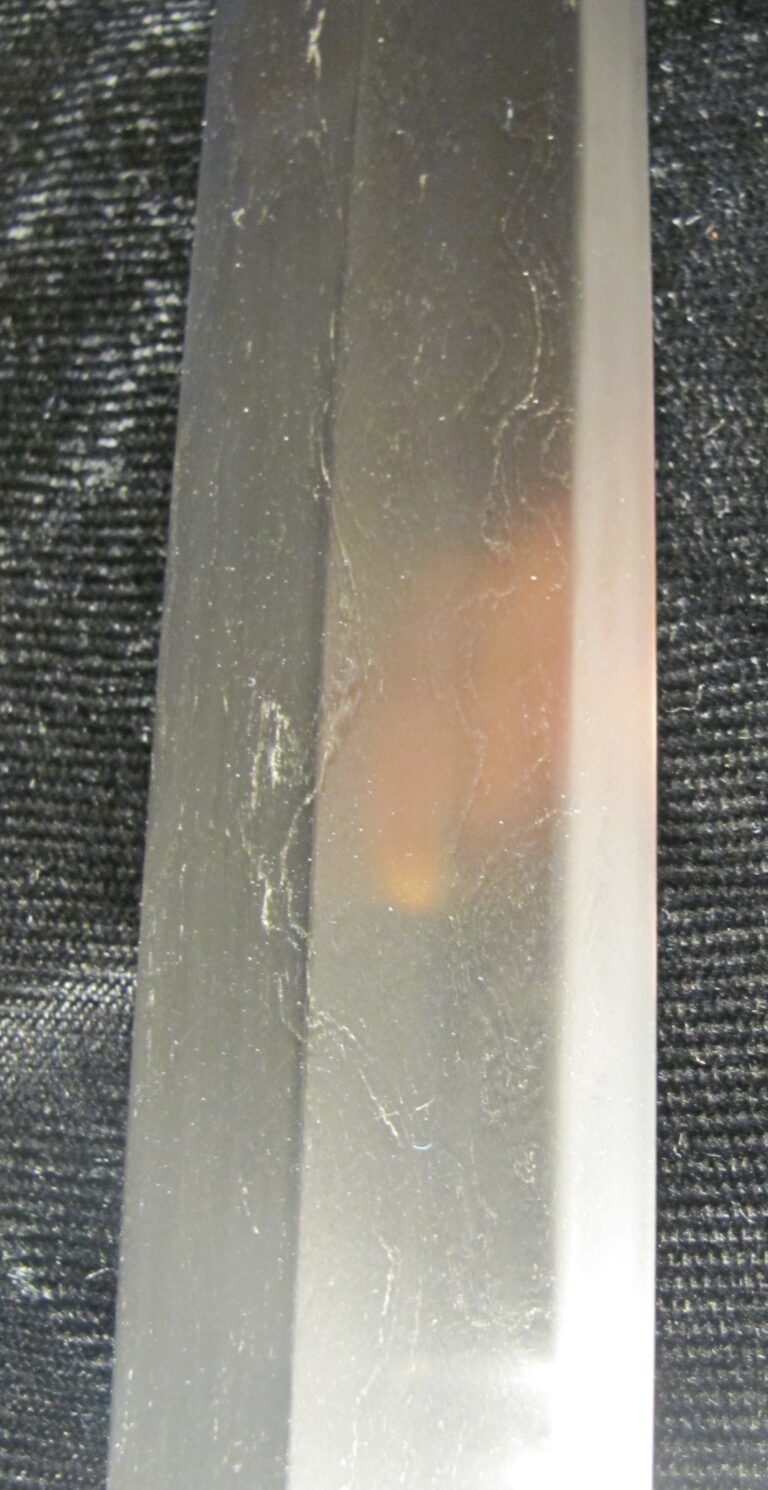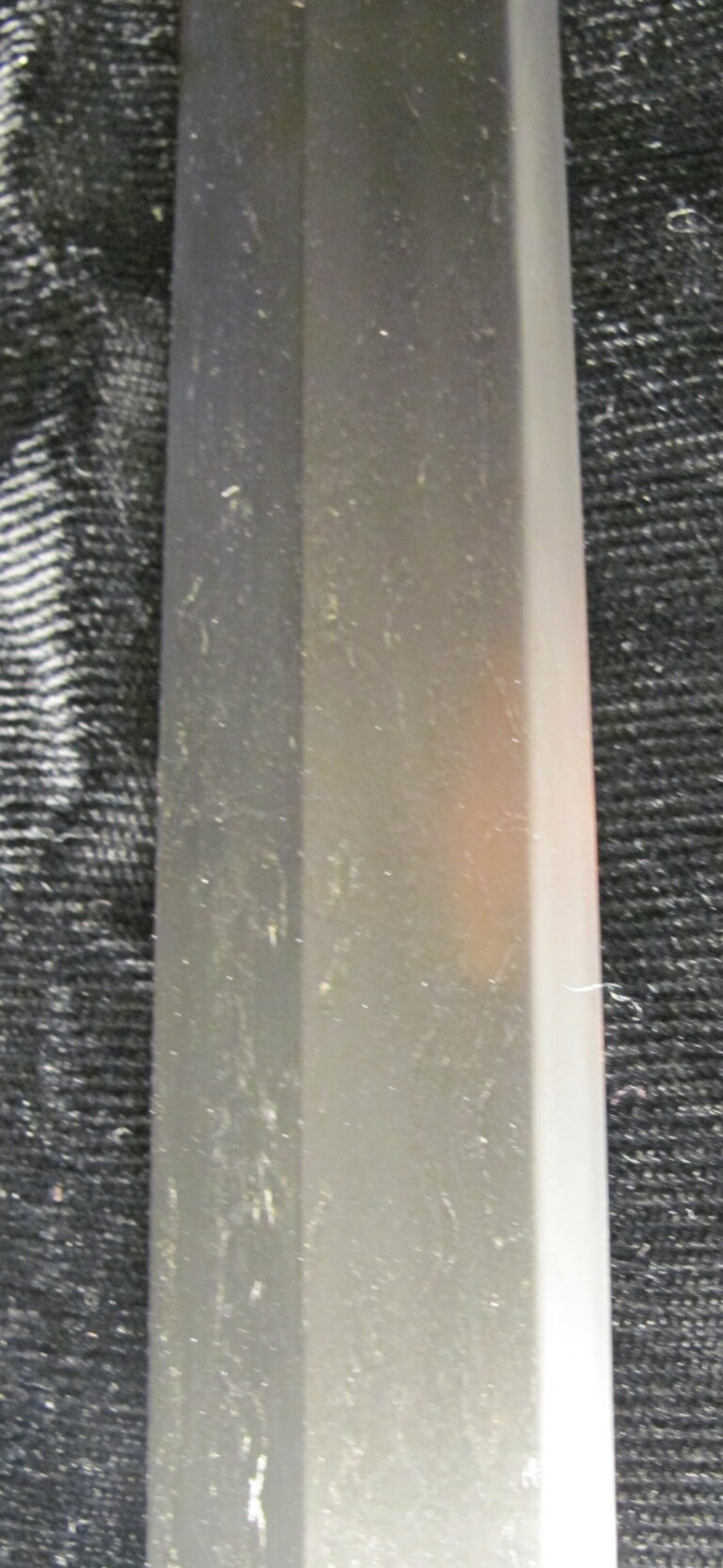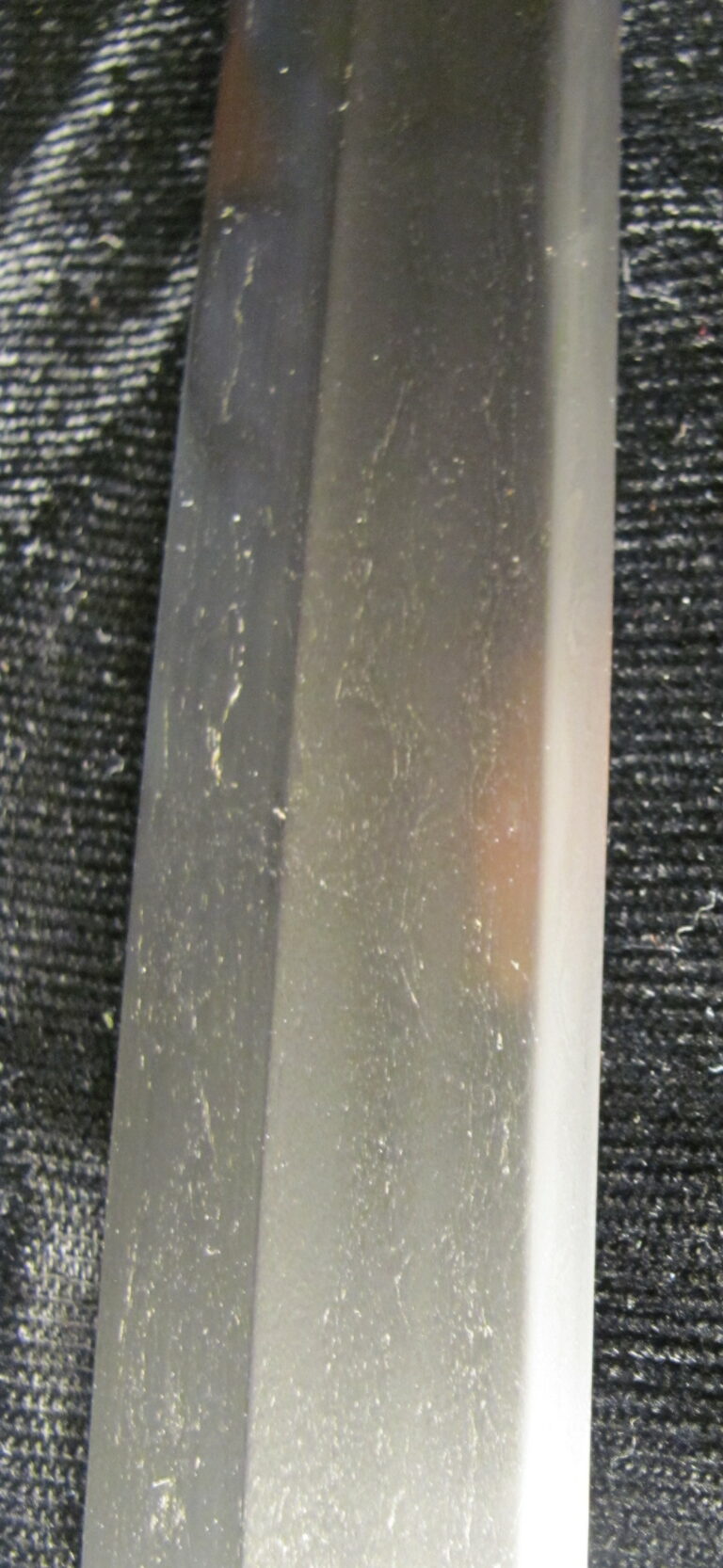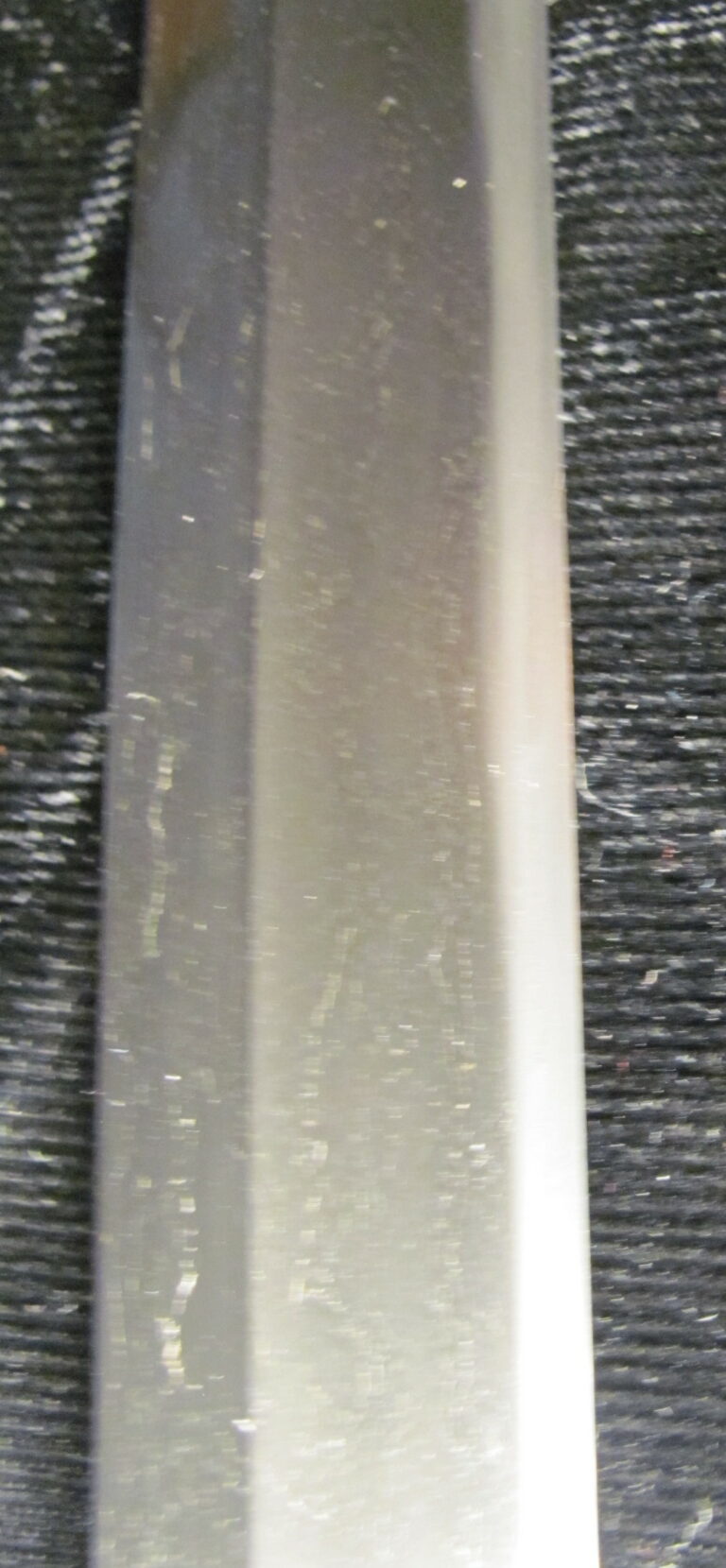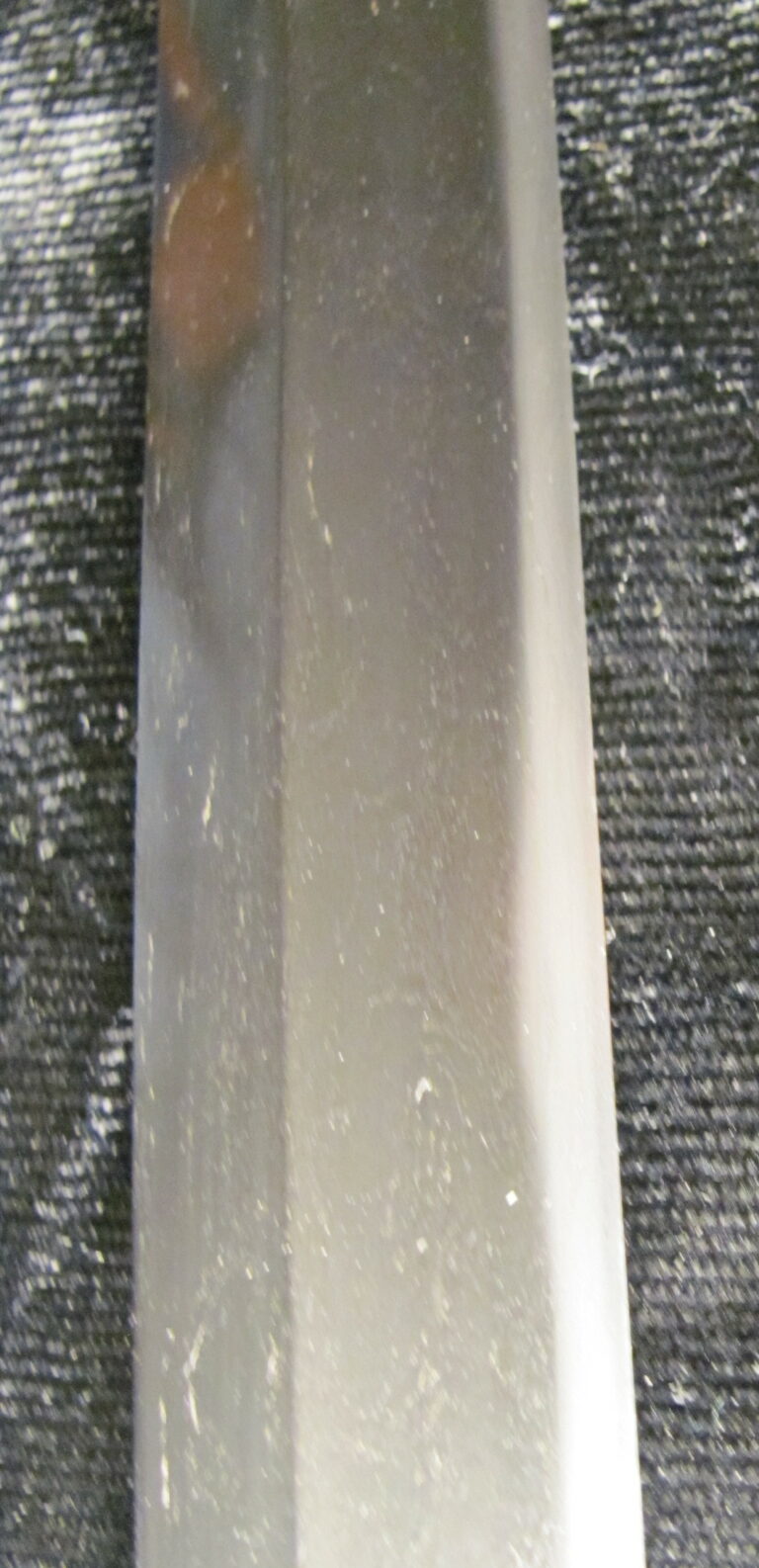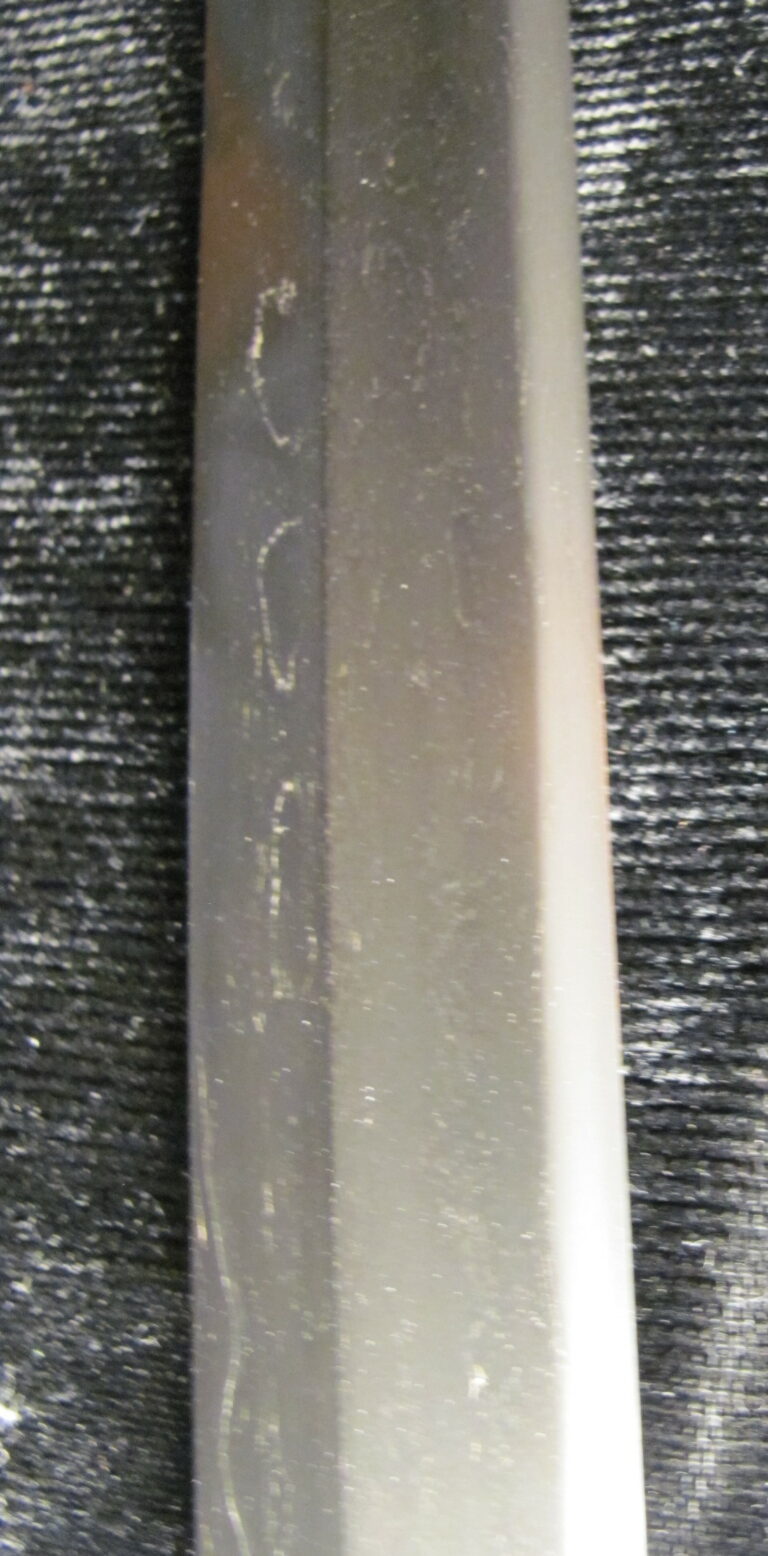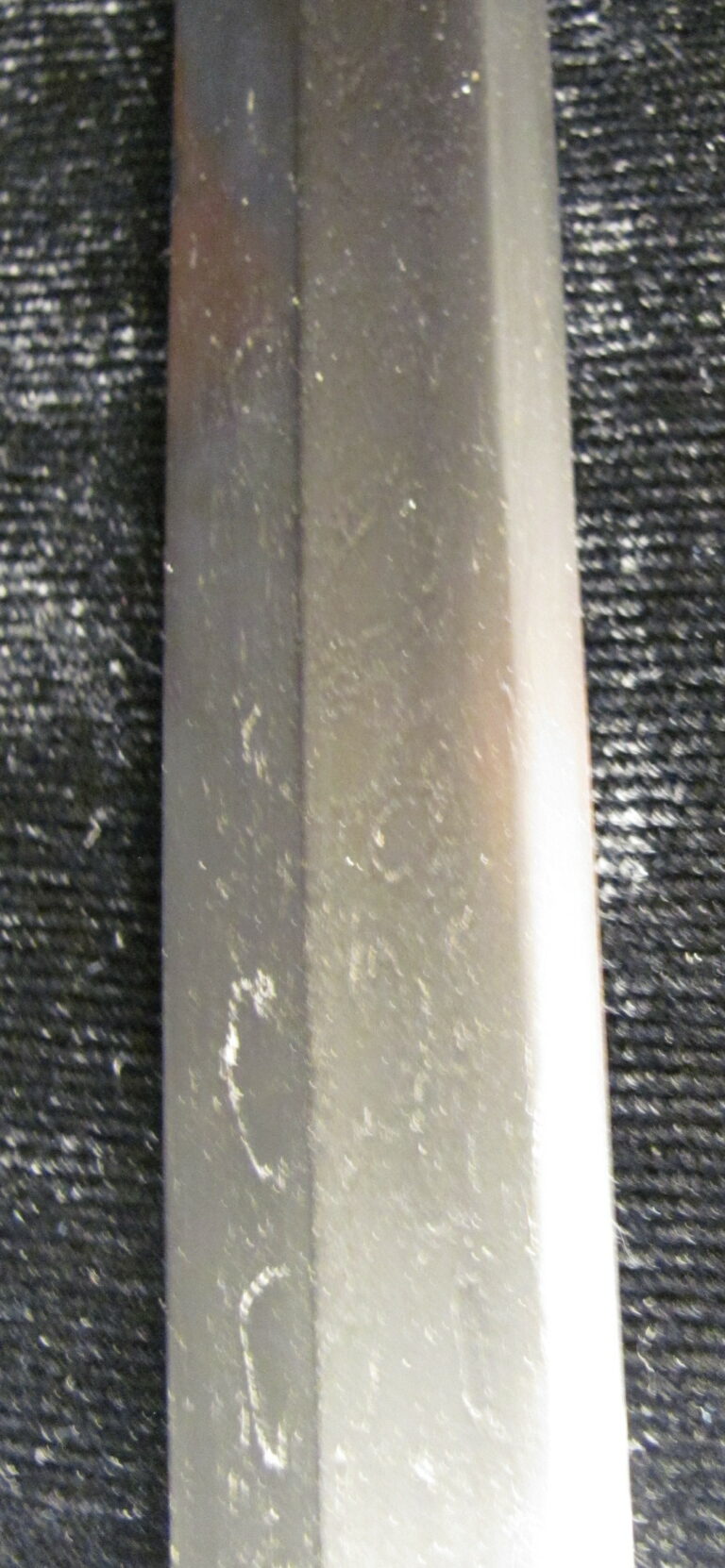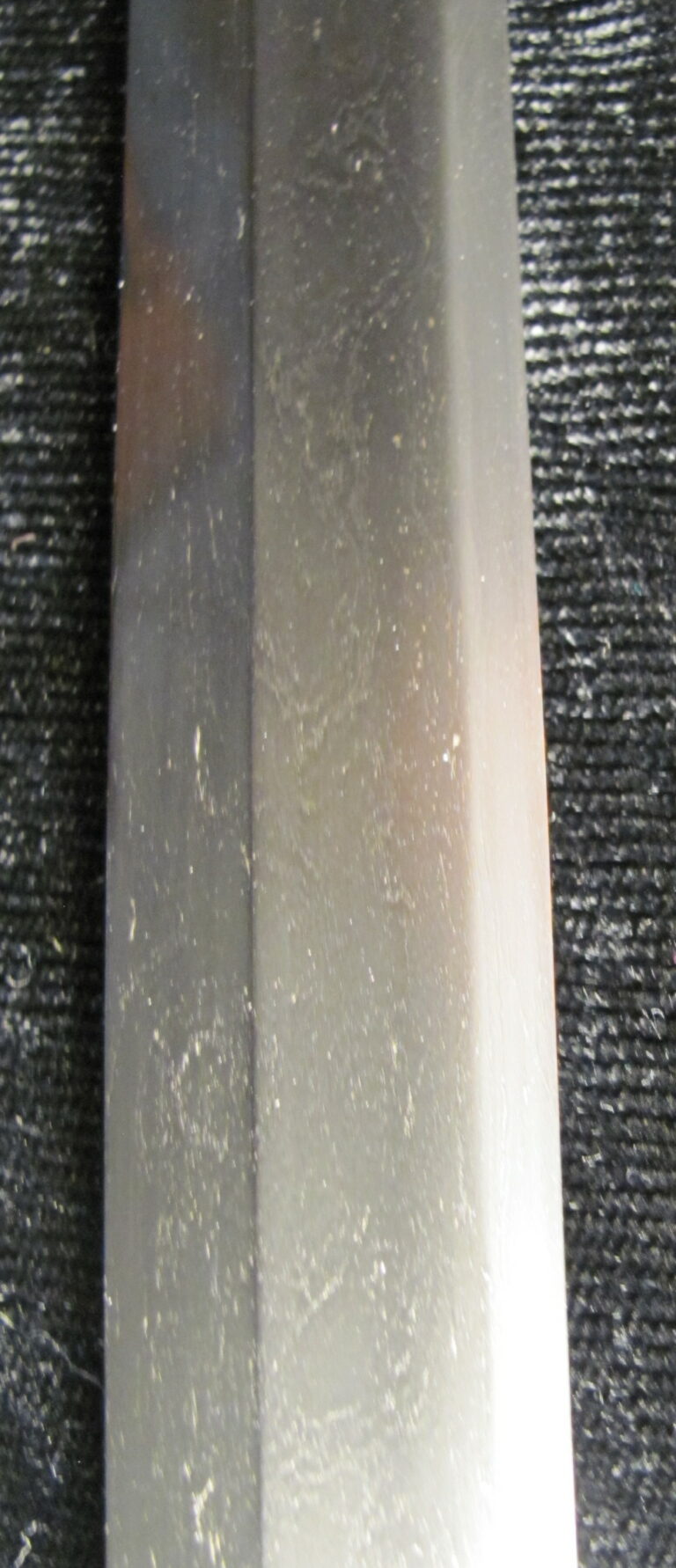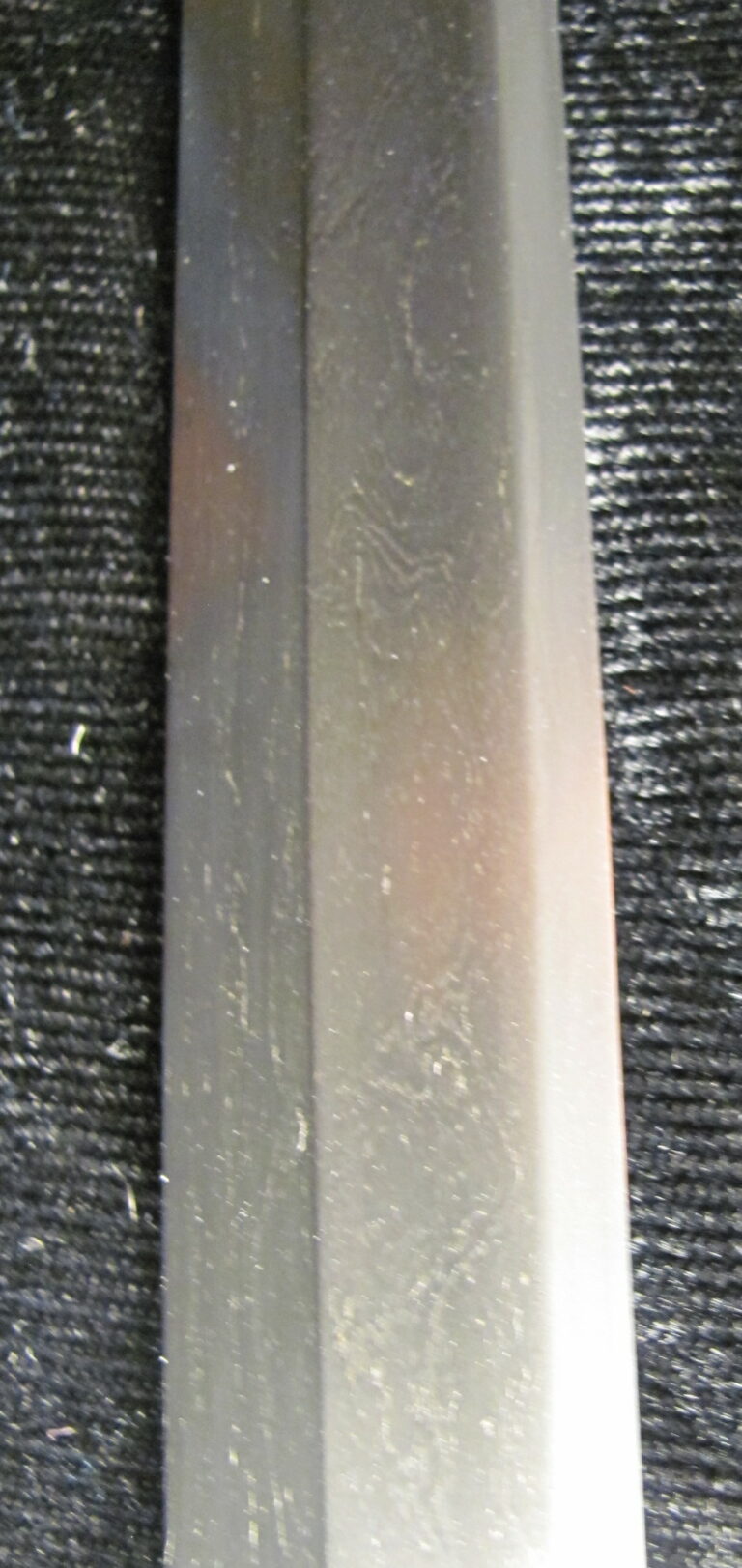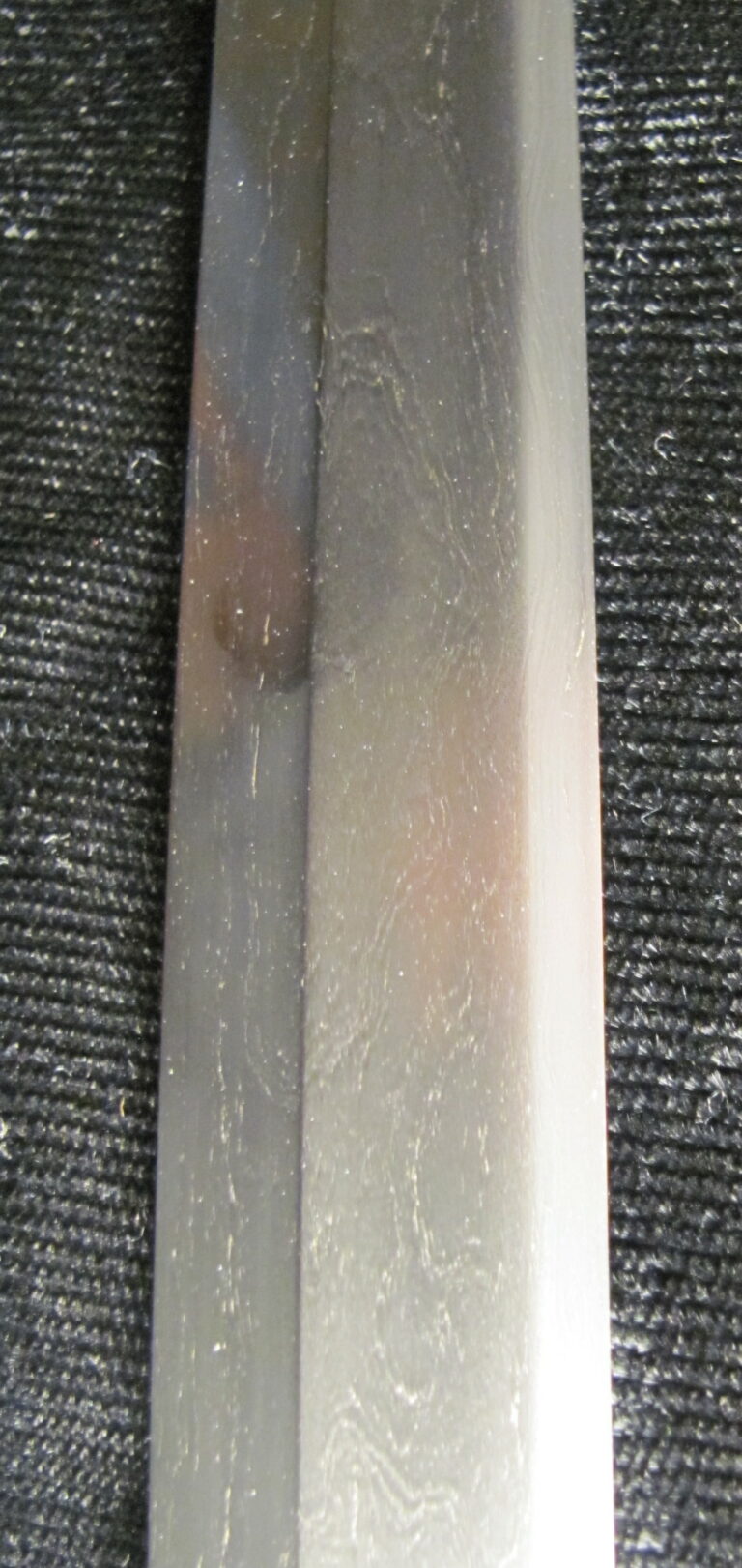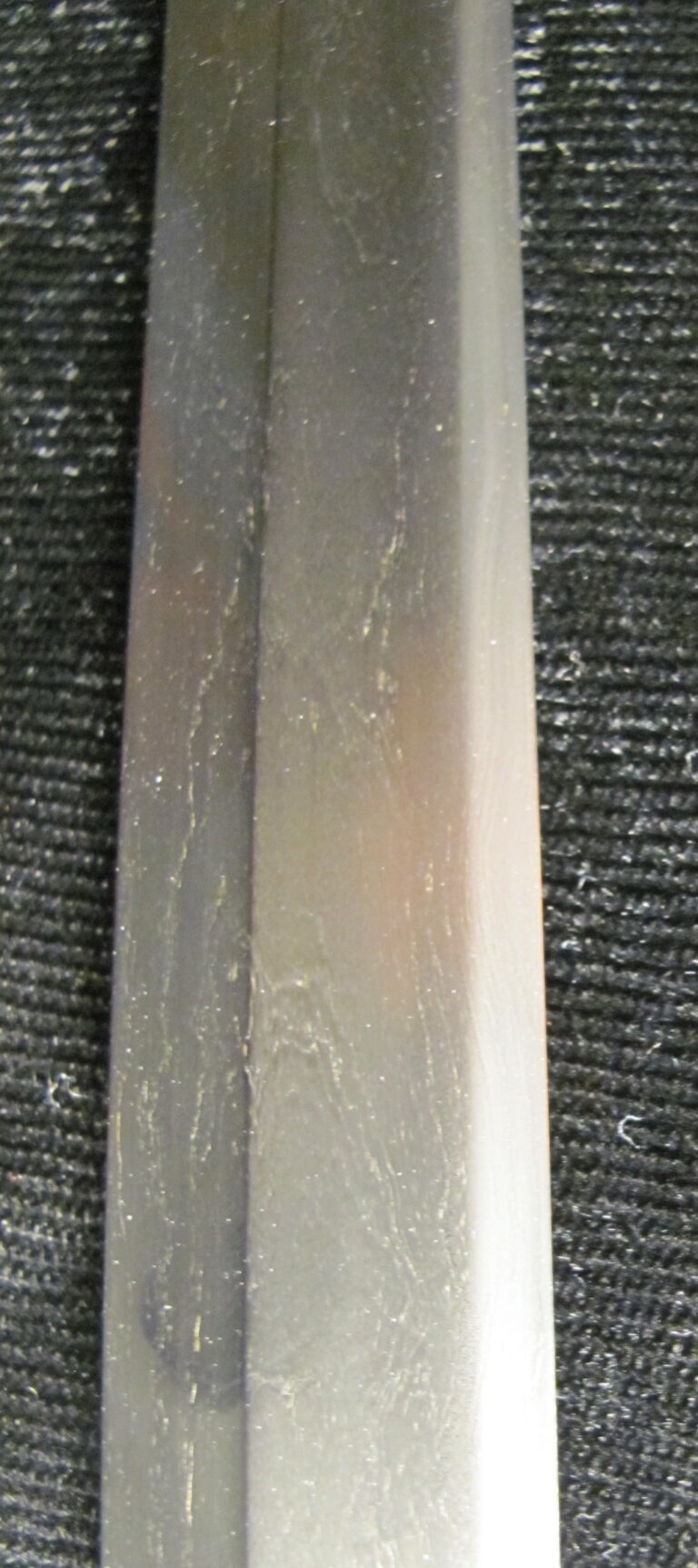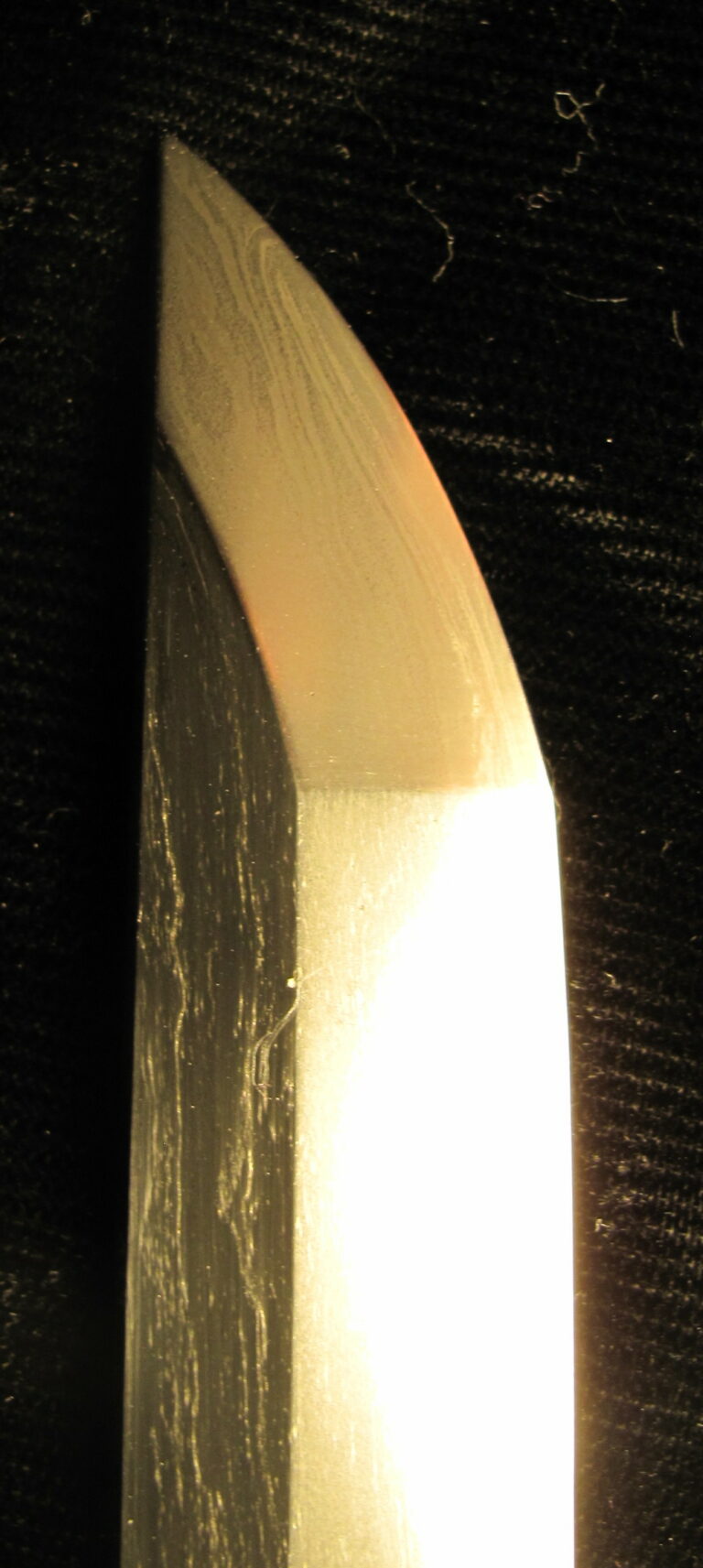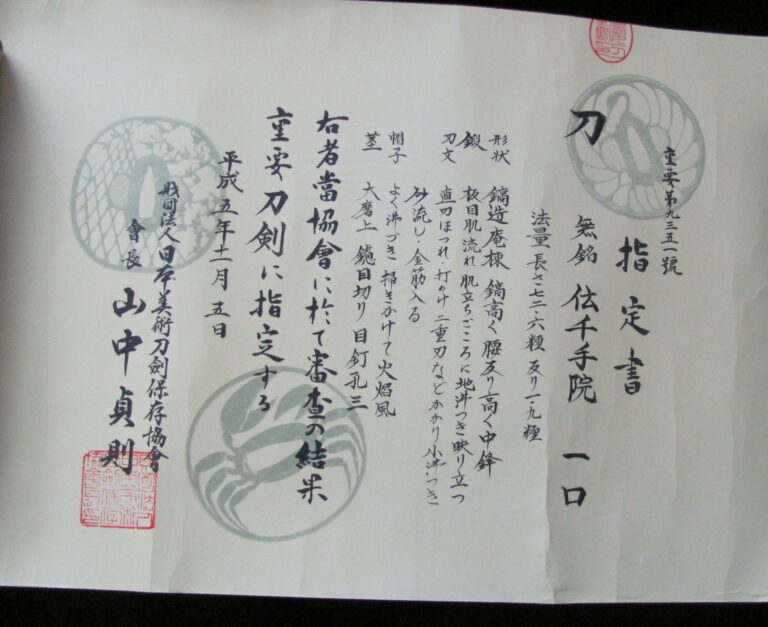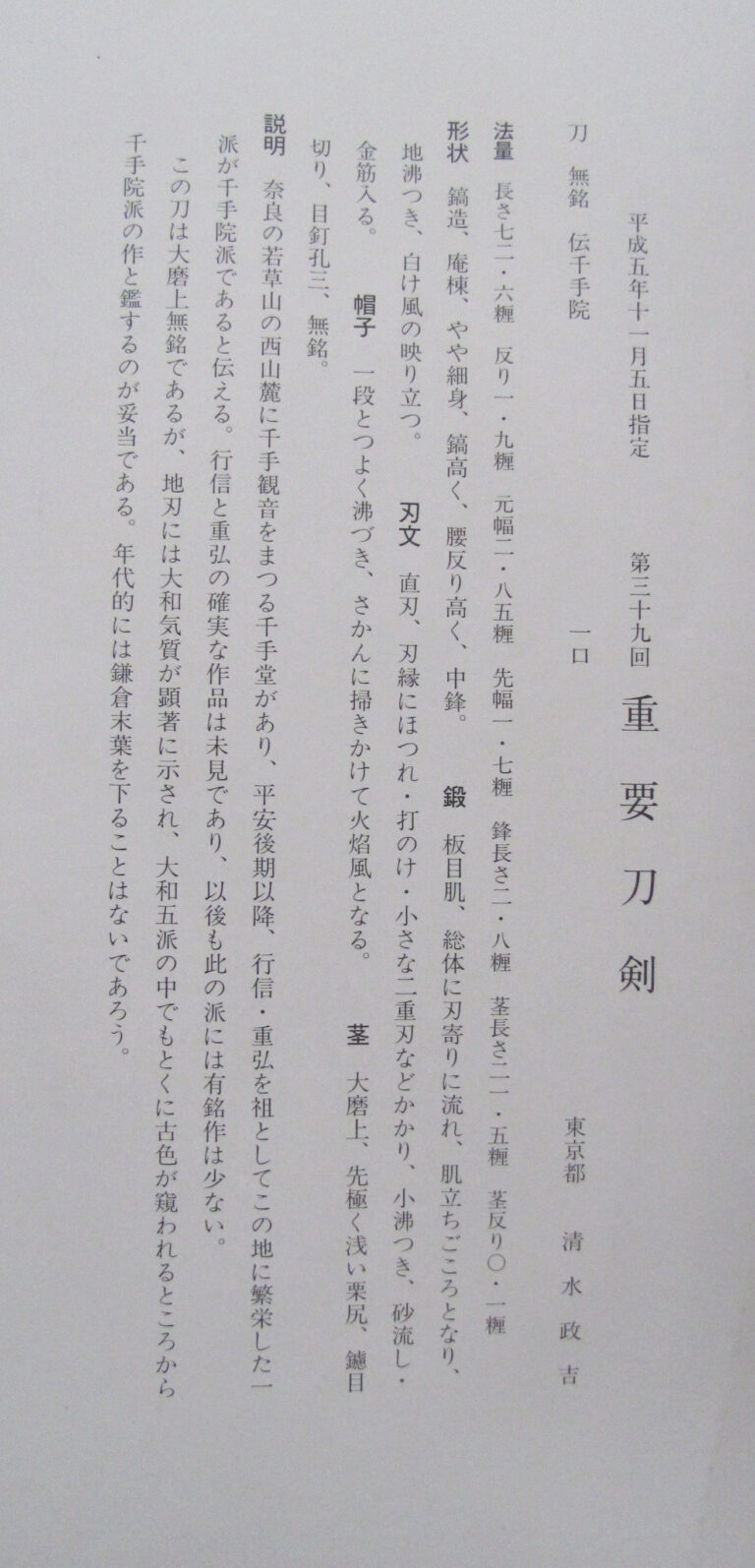Q825. Mumei Tachi with Juyo Paper to Yamato Senjuin. Late Kamakura Period
$23,995.00
Q825. Late Kamakura Tachi. Senjuin. O-Suriage Mumei, 72.6 cm. 28 5/8” Juyo Token 1994, Polish by Fujishiro School. Here is a translation of the Juyo paper:
Heisei 5 (1993) November 5
Designated at the 39th Jūyō Shinsa
Jūyō Tōken
One Katana Mumei DEN SENJUIN
Tōkyō SHIMIZU Masayoshi
Dimensions Nagasa 71.6cm, sori 1.9cm, motohaba2.85cm, moto kasane .7 cm, sakihaba 1.7cm, saki kasane .4 cm, kissaki nagasa 2.8cm, nakago nagasa 21.5cm, nakago sori 0.1cm. Overall in shira-saya 40 1/8″ 101.7 cm.
Shape Shinogi zukuri, iori mune, somewhat slender, with a high shinogi, high koshi-sori, midsize kissaki.
Kitae Itame hada, overall flowing towards the ha, with hadatachi (areas showing steel variations), jinie, and an utsuri which resembles shirake.
Hamon Suguha, with a habuchi showing hotsure, uchinoke, and a small nijūba, with small nie (konie), sunagashi, and kinsuji.
Bōshi Nie strongly prominent throughout, and kaen-like pattern with hakikake.
Nakago Ōsuriage, ending in very thin kurijiri, with horizontal (kiri) file marks, three mekugi-ana, and mumei.
Explanation
In the western foot of Nara’s Mt. Wakakusa, lies the Senjudō Temple, in which Senju Kannon is enshrined. This is where, according to tradition, the Senjuin School was founded by Yukinobu (行信) and Shigehiro (重弘) in the later part of the Heian era, and flourished. As of yet, there have been no authenticated examples found of either Yukinobu or Shigehiro’s works, and even signed examples of later works for this school are rare.
This sword is ōsuriage and mumei, but the Yamato characteristics are notably present in the jiba, and it looks remarkably classical even among the five schools of the Yamato tradition, which makes it appropriate to attribute this sword to the Senjuin school. The age of this sword is no later than the end of the Kamakura period.
And I will add: Yamato is one of the 5 main traditions of Koto (old sword) and Senjuin is one of the 5 schools of Yamato (the others being Taema, Tegai, Hosho, and Shikkake). These 5 schools were located at Buddhist temples; the smiths were making swords for the temples’ armed forces. My pictures don’t tell you much about the hamon – the details are too fine for my mediocre photography – but the oshigata on the paper will give you a better idea. The pictures do, however, show the hada and I have shown every inch of the blade. This blade is healthy – no shintetsu (core steel) – and flawless, and it is in a very good polish done in Japan. It is mounted in well made shira-say in great condition and with a double gold foil habaki. It will come to you in a padded sword bag.
A 700 year old sword in wonderful condition: a lot to like. 2 pounds, 13 ounces. $23,995.
Sold Out
Sold Out

